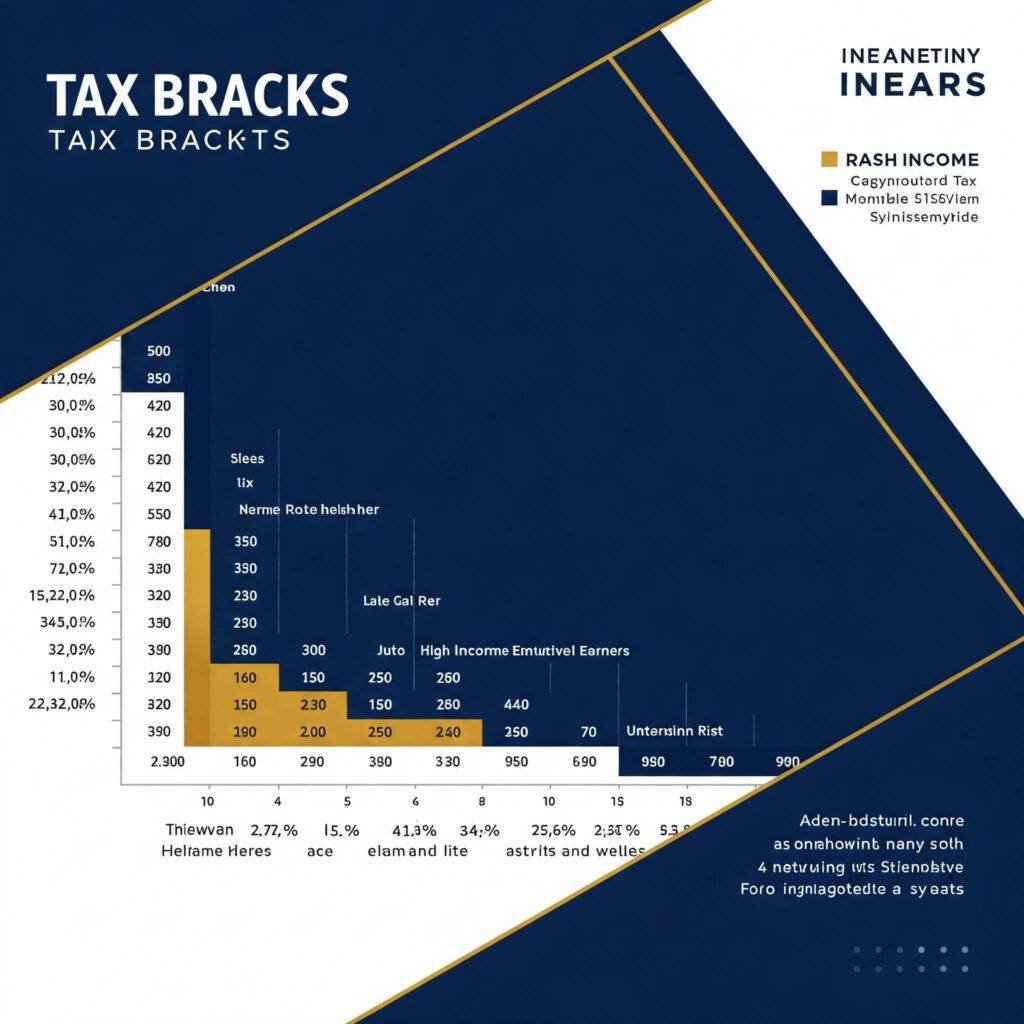Tax planning for high-income earners is more than just filing taxes—it’s a strategic approach to minimizing tax liabilities and maximizing wealth. If you’re earning a high income, you’re likely in the top tax brackets, facing rates as high as 37% in the U.S. (as of 2025). Without careful planning, a significant portion of your income could vanish to taxes. This guide will walk you through expert tax strategies, actionable tips, and real-world examples to help you keep more of your hard-earned money.

Why Tax Planning for High-Income Earners Matters
High-income earners—typically those with annual incomes exceeding $609,350 (single) or $731,200 (married filing jointly) in 2025—face unique tax challenges. The higher your income, the more complex your tax obligations become. Effective tax planning ensures you’re not overpaying while staying compliant with IRS regulations.
- Higher Tax Rates: Top earners face a 37% federal tax rate, plus state taxes in many cases.
- Complex Income Sources: Bonuses, stock options, and investment income add layers of tax complexity.
- Wealth Preservation: Strategic planning protects your wealth for long-term goals like retirement or legacy building.
Real-World Example: Sarah, a tech executive earning $800,000 annually, reduced her taxable income by $150,000 through a combination of retirement contributions and charitable donations, saving her nearly $55,000 in taxes.
Key Tax Strategies for High-Income Earners
To optimize your tax situation, focus on strategies tailored to your income level. Below are proven tax planning methods to reduce your tax burden.
Maximize Retirement Contributions
Contributing to tax-advantaged retirement accounts like a 401(k) or SEP-IRA lowers your taxable income. In 2025, the 401(k) contribution limit is $23,500, with an additional $7,500 catch-up for those over 50.
- Actionable Tip: If self-employed, consider a SEP-IRA, which allows contributions up to $69,000 or 25% of net earnings (whichever is less).
- Example: John, a consultant, contributed $60,000 to his SEP-IRA, reducing his taxable income and saving $22,200 in taxes at the 37% rate.
Outbound Link: Learn more about retirement account limits on the IRS website.

Leverage Tax-Advantaged Investments
High-income earners can benefit from investments that offer tax breaks, such as municipal bonds or real estate.
- Municipal Bonds: Interest from these bonds is often exempt from federal (and sometimes state) taxes.
- Real Estate: Depreciation deductions and 1031 exchanges can defer or reduce taxes on property investments.
- Opportunity Zones: Investing in designated areas can defer capital gains taxes.
Actionable Tip: Consult a financial advisor to identify municipal bonds or Opportunity Zone funds that align with your portfolio.
Outbound Link: Explore Opportunity Zone benefits on the U.S. Treasury website.
Optimize Charitable Contributions
Charitable giving not only supports causes you care about but also provides significant tax deductions. Donating appreciated assets, like stocks, avoids capital gains taxes while allowing you to deduct the full market value.
- Example: Emily donated $50,000 in appreciated stock to a charity, avoiding $10,000 in capital gains taxes and claiming a $50,000 deduction, saving her $18,500 in taxes.
- Actionable Tip: Consider a Donor-Advised Fund (DAF) to bundle donations and maximize deductions in high-income years.
Outbound Link: Read about Donor-Advised Funds on Fidelity Charitable.
Take Advantage of Tax Deductions and Credits
High-income earners often qualify for deductions and credits that lower their tax bill. Common options include:
- Home Office Deduction: If you work from home, deduct expenses like utilities and internet.
- Business Expenses: Deduct travel, marketing, and equipment costs if you’re self-employed.
- Child Tax Credit: For 2025, this credit is up to $2,000 per qualifying child, though phase-outs apply for high earners.
Actionable Tip: Use tax software or a CPA to track deductions and ensure you’re claiming every eligible expense.

Common Mistakes in Tax Planning for High-Income Earners
Avoid these pitfalls to ensure your tax planning is effective:
- Ignoring Quarterly Estimated Taxes: Self-employed earners must pay quarterly taxes to avoid penalties.
- Overlooking State Taxes: High-tax states like California (13.3% top rate) can significantly impact your liability.
- Failing to Plan Year-Round: Waiting until April to plan taxes limits your options.
Actionable Tip: Work with a CPA year-round to adjust your strategy based on income fluctuations.
When to Hire a Tax Professional
While DIY tax planning is possible, high-income earners often benefit from professional help. A CPA or tax advisor can:
- Identify niche deductions and credits specific to your industry.
- Navigate complex investment income, such as carried interest or RSUs.
- Ensure compliance with ever-changing tax laws.
Data Insight: According to a 2023 H&R Block study, 68% of high-income earners who worked with a tax professional saved at least 10% more on taxes compared to those who filed independently.
Outbound Link: Find a certified CPA through the AICPA website.
Conclusion: Start Your Tax Planning Today
Tax planning for high-income earners is a powerful tool to protect your wealth and achieve financial goals. By maximizing retirement contributions, leveraging tax-advantaged investments, optimizing deductions, and avoiding common mistakes, you can significantly reduce your tax burden. Start implementing these strategies today, and consider consulting a tax professional to tailor a plan to your unique situation.
Ready to take control of your taxes? Review your income, explore the strategies above, and connect with a CPA to build a tax plan that works for you.
Outbound link:

